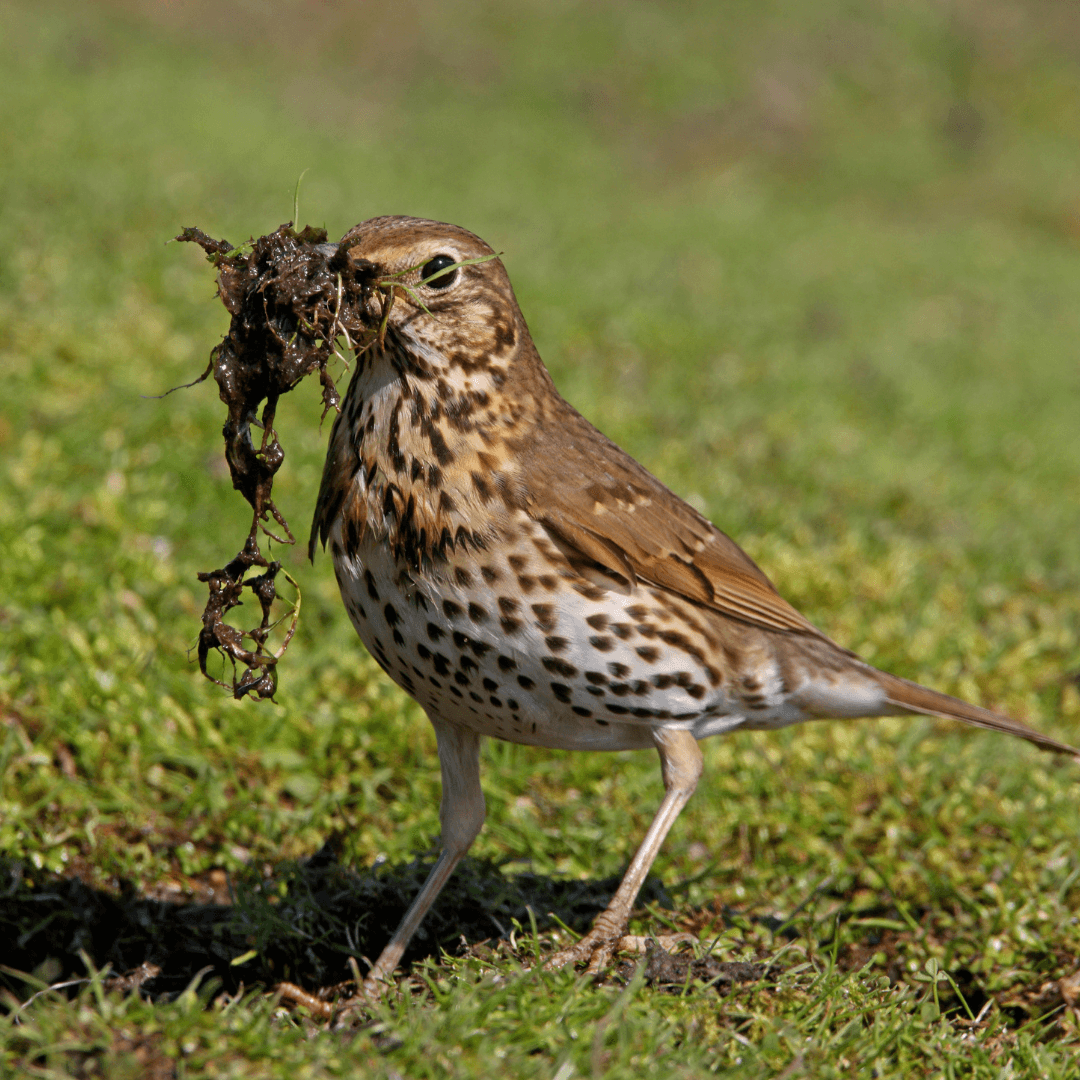Best Nesting Materials for NZ Birds.
A Song Thrush collecting organic material for nest building.
Spring in New Zealand is a wonderful time to watch our NZ birds prepare for the next generation. And each year thousands of nests are expertly constructed to house eggs and nestlings. It’s a skill birds are born with, and over time, as they get more practice, they achieve better and better results.
To find out more about how to support the garden birds you kohabit with take a look at our blog: How do NZ birds build their nests?
Birds need no intervention from humans when it comes to nest building, but many people like to lend a helping hand during the busy spring period. One way to do this is by putting out nesting materials for garden birds to use. But what materials are best, and what should be avoided?
Safe nesting materials for NZ birds.
A Welcome Swallow collecting mud for their nest construction.
Twigs and leaves.
At the beginning of spring, many of us start a post-winter garden tidy up. But be careful not to be too tidy. Birds need some of the items you may be clearing away, such as twigs and leaves, so it’s best to leave a pile of these for the birds to choose from. It's also a great way to help provide a natural environment for insects which is a natural food source for many birds.
2. Moss.
If you are removing moss from your garden remember the birds. Moss is a great material to build into nests to help soften them and keep chicks warm.
Birds like soft fluff to soften their nests. This House Sparrow will be pleased with this find.
3. Grass cuttings.
Untreated dried grass cuttings are often used by birds giving their nests and a warm soft lining.
4. Spider Webs.
Don’t clean all the spider webs off your windows or fences. Webs are extremely strong and lots of birds will use these to help hold their nests together. The webs also add flexibility to the nest so that it can stretch a little if necessary.
5. Short Animal Hair.
As long as the animal hair is short and has no flea or tick treatments on it can also be left out for the birds. Long animal hair is not suitable as it can get caught around the birds legs or chicks causing harm.
6. Feathers.
Leave any feather you may find out in your garden. Birds love to use feathers as they are natural, warm and soft.
Unsafe nesting materials for NZ birds.
This nest has been built with plastic rubbish.
1. Plastic.
Don’t put out strips of plastic. Although birds do naturally find plastic and end up using them in their nests you don’t want to cause more plastic pollution in your environment.
2. Dryer lint.
Although dryer lint is nice and soft, it's unsuitable for birds and shouldn’t be offered. Lint will disintegrate if it gets wet. It also often contains lots of synthetic fibres that you don’t want to get into the environment.
3. Human Hair.
Human hair is also unsuitable. It often has too many chemicals in it from washing and styling. And if it's long it can cause harm to birds and their chicks by tangling them up.
4. String.
String can also cause the birds to get tangled up and it is also often made of synthetic fibres. If you do have a natural string you can cut it into short 2cm lengths.
How to provide nesting materials.
Using a wire bird feeder is a great way to offer nesting materials to your garden birds.
When you have suitable nesting materials to give to your NZ garden birds you need to leave them out to be collected. There are a few different ways you can do this.
1. Use a wire bird feeder.
You can put materials in a wire bird feeder. Remember not to pack them in too tightly as it will be hard for the birds to pull out.
2. Leave them in the garden.
You can simply leave them in the garden and hope the birds will find them. This works best for natural items that occur in your environment such as leaves, twigs or grass cuttings.
3. Wedge them in crevices around the garden.
If you don't have a feeder, you can simply wedge nesting materials in crevices in walls, trees or fences for the birds to find. This works well for natural materials as they will simply disintegrate if birds don't use them.
4. Leave them in hedges.
You can leave some items hanging in hedges or trees. Again this is only suitable for natural materials.
Every little helps your NZ garden birds.
In today's environment birds have less and less natural resources around them, especially in our urban areas. By providing suitable nesting materials you can lend a helping hand to the creatures you kohabit with. To find out more about how to support the garden birds you kohabit with take a look at our blog: Support your NZ garden birds this spring. Every little will help support them and the next generation thrive.







